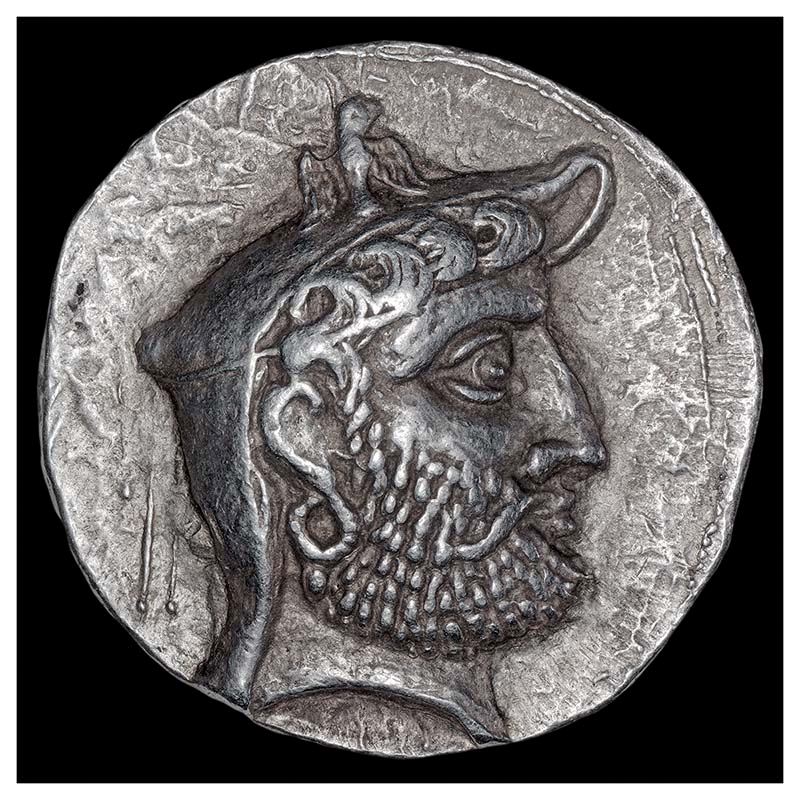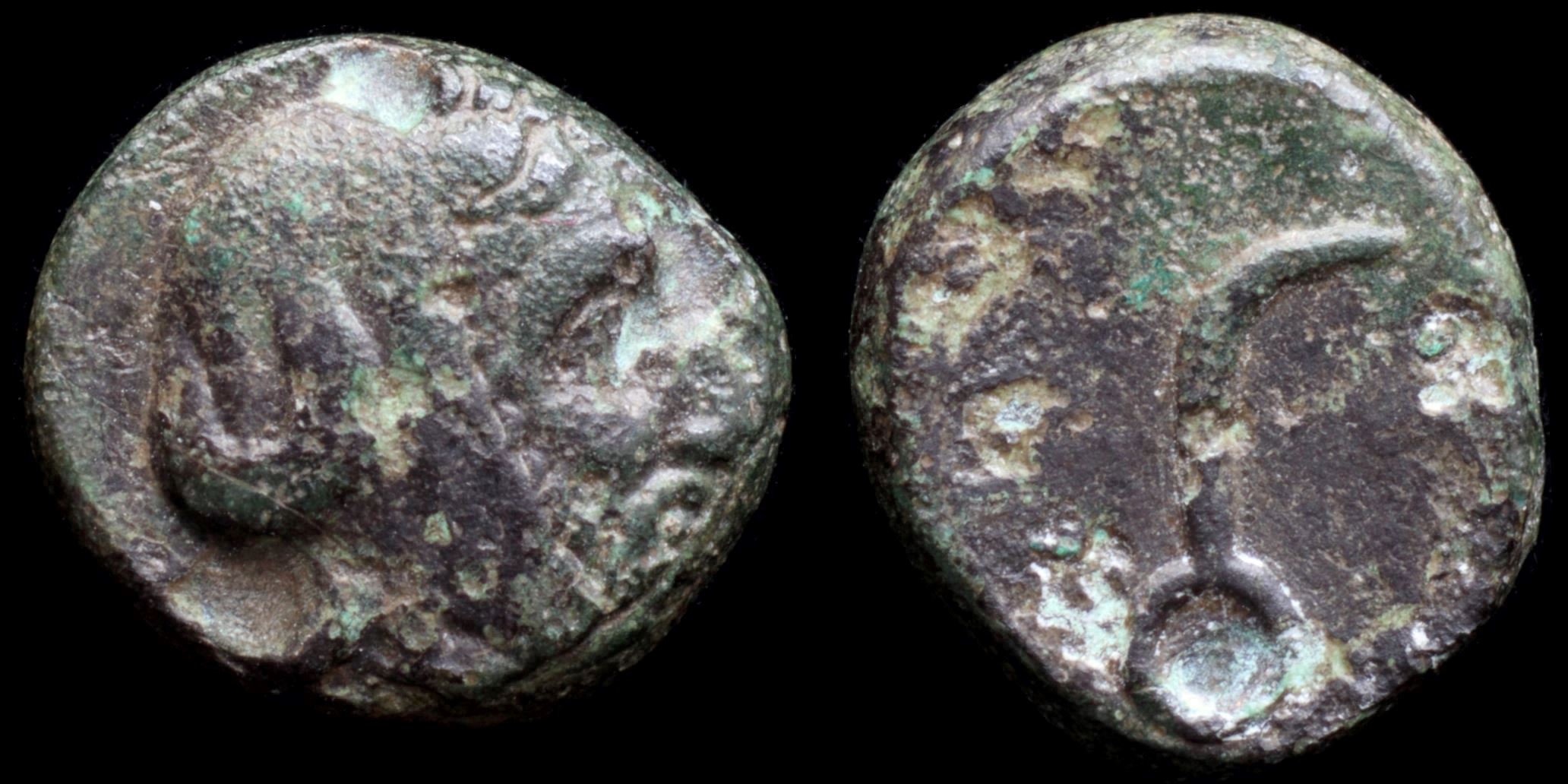Autophradates was a satrap of Lydia under Artaxerxes II, from 391 B.C. until the late 350s.
Some coins with his portrait come from the cities Lampsacus and Cyme, which belonged to his satrapy. In an inscription from Lycia, which was in the sphere of his influence, he is called “Vātafradāta, the Persian satrap.”
Autophradates and Hecatomnos, satrap of Caria, were ordered to put down the rebellion of Evagoras, king of Cyprian Salamis, who since 390 B.C. was in open revolt against Artaxerxes II. Only after ten years did Evagoras surrender on his own terms.
Some coins with his portrait come from the cities Lampsacus and Cyme, which belonged to his satrapy. In an inscription from Lycia, which was in the sphere of his influence, he is called “Vātafradāta, the Persian satrap.”
Autophradates and Hecatomnos, satrap of Caria, were ordered to put down the rebellion of Evagoras, king of Cyprian Salamis, who since 390 B.C. was in open revolt against Artaxerxes II. Only after ten years did Evagoras surrender on his own terms.

(1)
Autophradates

Obverse: head of Autophradates right, wearing Persian tiara
Reverse: monoskelis
Diameter:
9 mm
Die Orientation: -
Weight: 1.4 g
Die Orientation: -
Weight: 1.4 g
No notes for this coin
Winzer 11.7.
